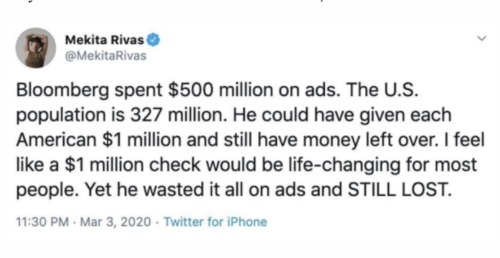When I was a child I liked to read. Actually, I still like to read – obviously. But as a child there was a limit to the books to which I had access. The library only let me into the children’s section until I reached a certain age – twelve, I believe. That made a tremendous dent in my reading choices.
But when I was around ten, a bookstore catalogue started coming to our house. I would pore over it for hours, studying the selections and planning to buy one or two. I had a little money saved up from birthdays and such, and in those days mail order stores accepted cash. And so one of the first books I purchased was the venerable Extraordinary Popular Delusions and the Madness of Crowds.
Obviously, a blogger in the making.
I didn’t read the whole thing, but I read enough, and understood enough, to get the picture: sometimes a sort of contagion swept a group of people, or the entire world, and they came under the grip of some sort of hope or fear that wasn’t warranted by facts. It’s a lesson that proved to be valuable, although of course it’s not always easy to tell what’s reasonable and what’s unreasonable.
Which brings us to this recent comment by “KyndyllG”:
It’s been well over a month since responsible health organizations and medical professionals began encountering, and producing reports about, significant numbers of mild and asymptomatic cases of COVID-19. This undermined, to at least some extent, the original reports out of China, which are the source of all of the panic. There has been a sort of online tug-of-war ever since.
If anyone or anything says something or issues a report or statement that should make reasonable people reconsider fear, doom and panic, a swarm of people show up to make posts that translate to, “No! No! Panic! More doom!” It’s weird. I’m not really a tinfoil hat brigade member, but after watching this for more than a month, I really do wonder if there’s organized groups trying to gin up ongoing panic at the forum/social media level.
I don’t know the answer to that last part. I suspect there are some such groups, but I think the cause of the phenomenon so far is mostly a combination of a host of additional factors. The first, of course (as previously mentioned in various posts), is that panic sells, in the sense of engendering viewership and clicks. The second (also previously mentioned) is the constant effort by the left and the MSM to harm Trump.
But the other factors are just part of human nature. One is that this is in part a statistical, and therefore a math and logic, issue. In order to understand illness and epidemiology, a person must understand not just math but the difference between death rates in the population versus death rates among the sick; how a sickness is defined and what percentage of those who are infected enter into the statistics at all; and how vulnerability, treatment, and statistics-keeping as well as reporting and candor varies from country to country and time to time.
I have come to the conclusion that most people either have trouble with all of that and/or let their emotions override their ability to process it. And granted, it’s quite complex. Maybe even boring to most people. So when a politician or a member of the news, or even a blogger or even a commenter on a blog gives a figure that sounds authoritative, and the reader/listener is already afraid, fear can escalate beyond what seems reasonable, given the facts.
Then of course there is what you might call the “unknown unknowns.” There is a tremendous limit to our knowledge, particularly at the beginning of the gathering of information about what appears to be a novel disease. For example, with H1N1, it took many years to get any real sense of the statistics and what they meant, and even now much of it is just an estimate. That’s the nature of the game. So fear can often rush into this semi-vacuum.
And then there’s what one might call the trust issue. A great many people have grown to deeply distrust the MSM, the authorities, the health care system, and just about everyone else who might be speaking on the subject. And since there is a huge spectrum of opinions, the reader can pick and choose as he or she wishes. You can get your fear du jour or your reassurance du jour, and being objective is probably rather rare.
It’s also the case that perceived threats that are novel tend to generate more fear than threats to which we’ve become accustomed. That’s another one of those “human nature” phenomena. It’s the main reasons why arguments – which I’ve even mounted myself on this blog, and plan to continue to mount – that compare COVID-19 to pneumonia or flu or H1N1 fail to reach most people. They may not realize it, but on some level they’ve accepted those risks but they don’t want to accept a new one.

